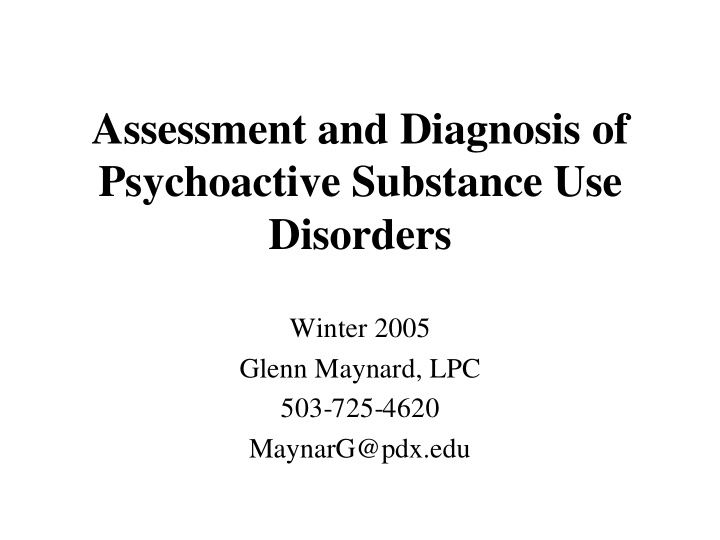



Assessment and Diagnosis of Psychoactive Substance Use Disorders Winter 2005 Glenn Maynard, LPC 503-725-4620 MaynarG@pdx.edu
Course Objectives: • Understand the elements of a bio-psychosocial assessment • Knowledge of standardized screening and assessment instruments for chemical dependency . • Knowledge and skills of motivational interviewing. • Ability to formulate a DSM IV psychoactive substance use disorder diagnosis based on a bio-psychosocial assessment • Ability to determine an appropriate level of treatment based on a patient placement criteria
Evaluation Activities: • Credit: • Attendance-20 points: Absence=5 point grade deduction (starting with the second absence) . • Case analysis paper-40 points: The case analysis will be due two weeks before finals. • Role-play and case presentation-40 points:
Evaluation Activities: • Non-Credit: Participation in all class activities including case analysis, role-play and case presentation
Goals of Assessment • Engage the client in the treatment process through motivating the client for change • Understand the nature and extent of the problem(s) • Identify client strengths and resources • Develop a plan for change
Assessment Paradigms • DSM-IV-Biopsychosocial Assessment • Level of Care-ASAM • Readiness for Change
Assessment Data Sources • Past Assessment/Treatment Information • Current Findings Including Clinical Interview and Toxicology • Collateral Family, School, Work, Legal, and Medical Information
Biopsychosocial Assessment • Presenting Problem • History of Problem • Psychosocial History • Medical History • Psychiatric History • Mental Status • Drug Use History • Treatment History
Drug Use History • Specific Questions About All Classes of Psychoactive Substances • Age of First Use • Last Use • Frequency, Duration, and Amount Used • Route of Administration • History of Withdrawal
Recommend
More recommend